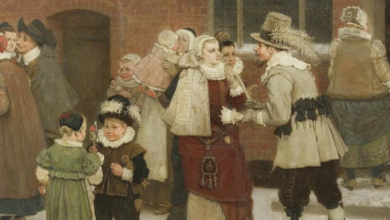1927: Supreme Court Declares Asian Americans ‘Colored’ & Upholds Banning Them from White Schools


 On November 21, 1927, in Gong Lum v. Rice, the U.S. Supreme Court ruled against the Chinese American Lum family and upheld Mississippi’s power to force nine-year-old Martha Lum to attend a “colored school” outside the district in which she lived.
On November 21, 1927, in Gong Lum v. Rice, the U.S. Supreme Court ruled against the Chinese American Lum family and upheld Mississippi’s power to force nine-year-old Martha Lum to attend a “colored school” outside the district in which she lived.
Applying the “separate but equal” doctrine established in 1896’s Plessy v. Ferguson decision, the Court held that the maintenance of separate schools based on race was “within the constitutional power of the state legislature to settle, without intervention of the federal courts.”
First adopted in 1890 following the end of Reconstruction, the Mississippi Constitution divided children into racial categories of Caucasian or “brown, yellow, and Black” and mandated racially segregated public education.
The Lum family had two American-born children who had attended local public schools for white children without incident until, in the wake of an increase in anti-Chinese sentiment nationwide after passage of the Immigration Act of 1924, they were told by administrators that their children could only attend the district’s school for Black children.
Adrienne Berard points out in Water Tossing Boulders: How a Family of Chinese Immigrants Led the First Fight to Desegregate Schools in the Jim Crow South (Beacon Press, 2016) that their reason for choosing to avoid black schools was motivated by racism.
In fact, Katherine Lum later told a reporter, “I did not want my children to attend the ‘colored’ schools [because] the community would have classified us as Negroes.”
In 1924, the state law was applied to bar Martha Lum from attending Rosedale Consolidated High School in Bolivar County, Mississippi — a school for white students. Martha’s father, Gong Lum, sued the state in a lawsuit that did not challenge the constitutionality of segregated education but instead challenged his daughter’s classification as “colored.”
When the Mississippi Supreme Court held that Martha Lum could not insist on being educated with white students because she was of the “Mongolian or yellow race,” her father appealed to the U.S. Supreme Court.
In its decision siding with the state of Mississippi, the Court reasoned that Mississippi’s decision to bar Martha from attending the local white high school did not violate the Fourteenth Amendment because she was entitled to attend a “colored” school.
This decision extended the reach of segregation laws and policies in Mississippi and throughout the nation by classifying all non-white individuals as “colored.”
Lum continued to be cited in briefs supporting racial segregation, and court decisions upholding it, until it was effectively overruled 27 years later by the Court’s decision in Brown v. Board of Education, which outlawed segregation in public schools.
An important part of the decision still stands — the power of the state to make racial distinctions in its school system, and to determine the race of its students. It has not been overturned because it was not an issue in Brown.
In 1899, a ruling similar to Plessy vs. Ferguson in New York State decided that it was legal to refuse admittance of a “colored child” to a “white public school.” Although this provision was repealed in 1938, theoretically making segregated schools illegal, no real desegregation occurred and schools remained segregated in New York
Indeed, until the Civil Rights Movement of the 1950s and 1960s segregation in New York State remained widespread and generally lawful, and government and public policy sanctioned it and helped to create it: there were whites-only signs across the state, racially restrictive covenants in property deeds and leases, whites-only classified job advertisements, whites-only hotels and restaurants and segregated seating in public accommodations, including theatres and transportation.
New York City continues to have one of the most segregated school systems in the United States.
This essay was drawn in part from the Equal Justice Initiative who’s organizers believe that until we confront our history of racial injustice and its legacy, we cannot overcome the racial bias that exists today. EJI works to end mass incarceration, excessive punishment, and racial inequality.
Photo: The Lum Family, circa 1928.
Source link





